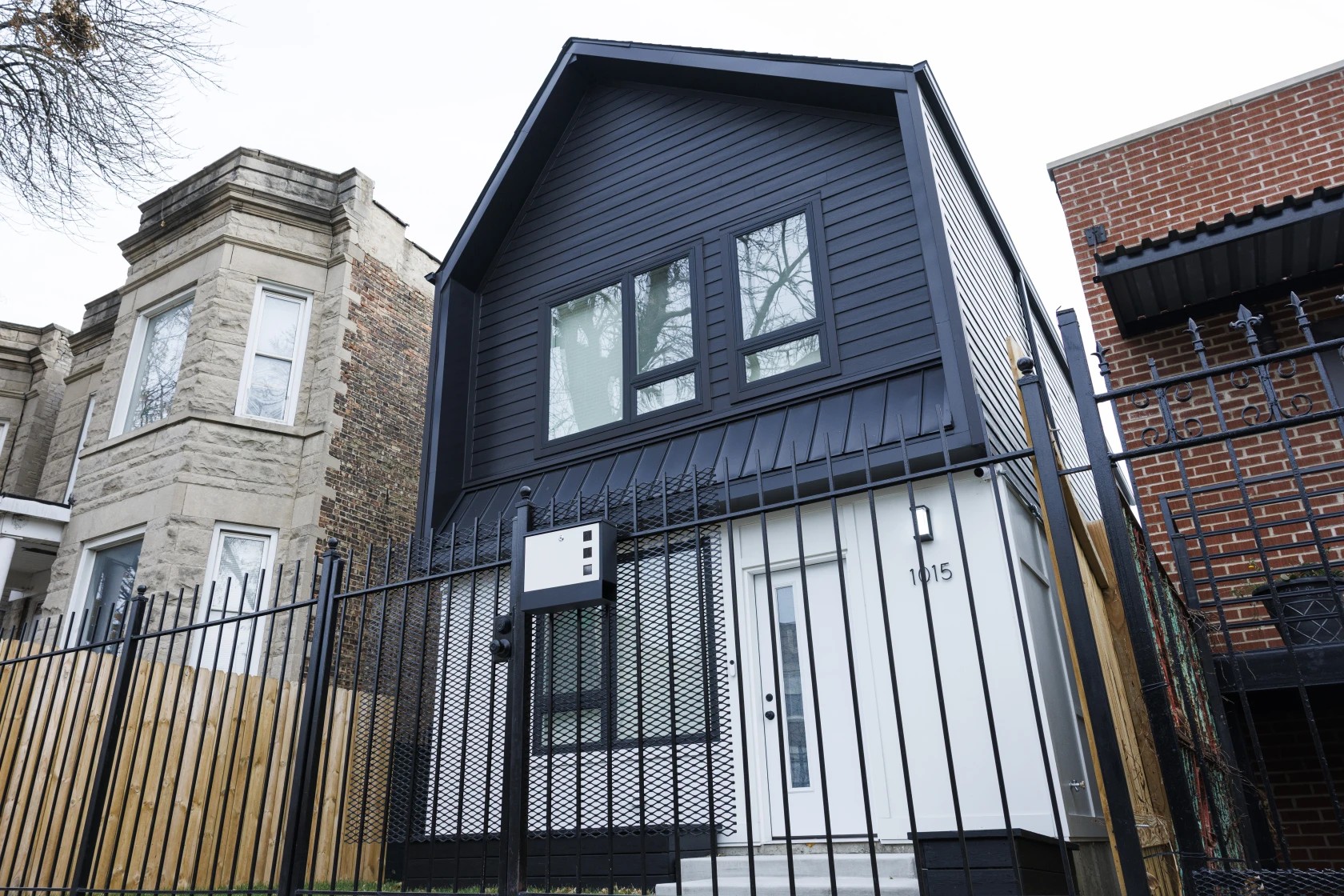City Commission Approves Garfield Green Affordable Housing To ‘Counteract Pressures Of Displacement’ In East Garfield Park

From Block Club Chicago:
EAST GARFIELD PARK — An affordable housing development is coming to an area of East Garfield Park with abundant public transit options to “counteract the pressures of displacement” in the changing neighborhood, a developer said.
Tentatively called the Garfield Green, the affordable housing project plans to build on the positive impacts of nearby large developments, such as the Garfield Park Community Eco-Orchard and the Hatchery Chicago, a food business incubator opened in 2019. Residents can get involved to decide the project’s final name, interior design and the look of public art at the site by emailing c40chicago@poah.org.
As the community develops, the availability of affordable housing and community-owned retail opportunities at the Garfield Green site will keep residents from being displaced, said Roberto Requejo, executive director of Elevated Chicago, a partner on the project.
“The project is really an attempt to counteract pressures of displacement in the community by creating affordable homes and creating commercial and retail space that would be owned by the community instead of being offered to external parties first,” Requejo said.
The first phase of the project will create 43 apartments for people making $30,000-$40,000 annually, as well as retail space and landscaped outdoor areas. Later phases will bring the number of units up to at least 80, and they will include building homes for purchase.
The Community Development Commission recently approved the sale of city-owned land and $6.5 million in tax increment financing incentives for the Garfield Green project. The development is expected to begin construction this summer on city-owned land at Kedzie and Fifth avenues.
The project now goes to City Council for approval.

The Garfield Green was selected in 2018 as a winner of the C40 Reinventing Cities competition, a global contest focused on transforming underused lots into models for sustainable urban planning.
The plan moving forward is the result of an intensive community engagement process that altered the design and the specific offerings of the development. When the project was initially developed by the city for the C40 Reinventing Cities Competition, “there was very little community engagement and ownership required for the competition,” Requejo said.
After the competition, the city identified a developer, Preservation of Affordable Housing, and initiated a series of engagement meetings and participation strategies to incorporate the needs of the community into the design of the project.
“We needed to get way better community engagement and go beyond that and offer something more, which is community ownership,” Requejo said.
Plans for the Garfield Green project have been led by various resident committees and guided by community feedback and input from the Garfield Park Community Council.
There is a committee guiding the vendors and businesses that will eventually occupy the commercial space in the development.
The 4,300-square-foot commercial space in the development “is outfitted for a restaurant if we want it to be. It could be a market, or an incubator or a café,” depending on what residents choose, said Molly Ekerdt, a vice president for Preservation of Affordable Housing.
The development team is also working with the resident committee to explore options for creating a “cooperative or shared-ownership model” for whatever business ends up there so residents could benefit from owning parts of the project, Requejo said.
Another committee led changes to the design of the development’s two buildings. The project was initially designed with a metallic look, but “there was feedback from the community that it didn’t necessarily fit,” said Kyle Lily, a development associate for Preservation of Affordable Housing.
Architects Perkins + Will and Nia Architects created updated designs that include more earth tones and brickwork and plans for public art and murals at four locations. The resident design committee is also focused on the interior design of the building.
“We were able to get input on what features would make the building more visually appealing. We gave those notes to our architecture team and they were able to incorporate that,” Lily said.
An arts and culture committee will determine the public art and community programs that will be incorporated into the site “because there is a big public art component to the project,” Ekerdt said.
“That arts committee will continue to shape what art gets installed and what artists we go with,” Ekerdt said.
The building will be designed to be energy-efficient with solar panels to offset energy costs, a green roof to improve stormwater resilience and other carbon-neutral elements. The project will also upgrade pedestrian infrastructure like sidewalks and street trees at the site to improve walkability.
And since the Garfield Green is being built in an area with transit options, like the Kedzie Green Line and Kedzie-Homan Blue Line stations, families living in the affordable homes will be connected to opportunities all over the city.
“We look at how can we make this area more equitable starting with providing people with more than one option to arrive to the place,” Requejo said.
This strategy of equitable transit-oriented development has environmental and mental health benefits since it reduces car emissions and promotes walking, cycling and public transportation, Requejo said. It also reduces the cost of living and having a family for people living in the affordable homes since they don’t need a car to access jobs, education and other opportunities, Requejo said.
“A lot of developments you see to this day are working for people who own cars, but they are not at all functional for people who use other kinds of transportation,” Requejo said.



